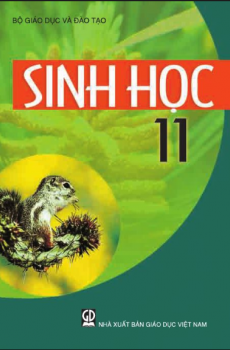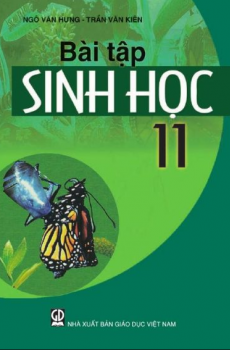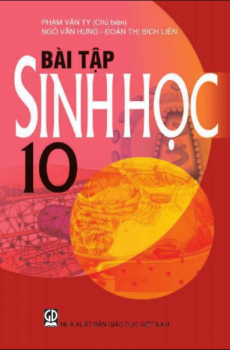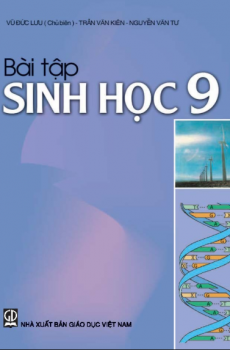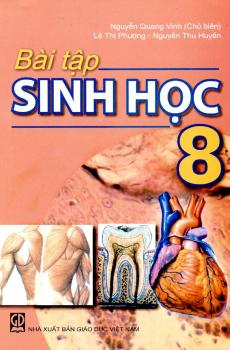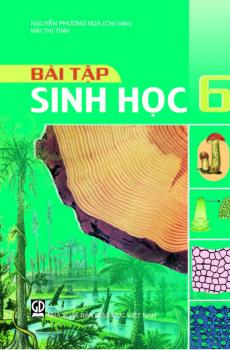On the Genesis of Species
On the Genesis of Species
Log in to download this book.
| Publisher | Chưa rõ |
|---|---|
| Accessible book producer | Public domain |
| Published year | 2007 |
| Coppy right | Chưa rõ |
CHAPTER I.
INTRODUCTORY
The problem of the genesis of species stated.—Nature of its probable solution.—Importance of the question.—Position here defended.—Statement of the Darwinian Theory.—Its applicability to details of geographical distribution; to rudimentary structures; to homology; to mimicry, &c.—Consequent utility of the theory.—Its wide acceptance.—Reasons for this other than, and in addition to, its scientific value. Its simplicity.—Its bearing on religious questions.—Odium theologicum and odium antitheologicum.—The antagonism supposed by many to exist between it and theology neither necessary nor universal.—Christian authorities in favour of evolution.—Mr. Darwin's "Animals and Plants under Domestication."—Difficulties of the Darwinian theory enumerated ... Page 1
CHAPTER II.
THE INCOMPETENCY OF "NATURAL SELECTION" TO ACCOUNT FOR THE INCIPIENT STAGES OF USEFUL STRUCTURES.
Mr. Darwin supposes that Natural-Selection acts by slight variations.—These must be useful at once.—Difficulties as to the giraffe; as to mimicry; as to the heads of flat-fishes; as to the origin and constancy of the vertebrate, limbs; as to whalebone; as to the young kangaroo; as to sea-urchins; as to certain processes of metamorphosis; as to the mammary gland; as to certain ape characters; as to the rattlesnake and cobra; as to the process of formation of the eye and ear; as to the fully developed condition of the eye and ear; as to the voice; as to shell-fish; as to orchids; as to ants.—The necessity for the simultaneous modification of many individuals.—Summary and conclusion ... Page 23
CHAPTER III.
THE CO-EXISTENCE OF CLOSELY SIMILAR STRUCTURES OF DIVERSE ORIGIN.
Chances against concordant variations.—Examples of discordant ones.—Concordant variations not unlikely on a non-Darwinian evolutionary hypothesis.—Placental and implacental mammals.—Birds and reptiles.—Independent origins of similar sense organs.—The ear.—The eye.—Other coincidences.—Causes besides Natural Selection produce concordant variations in certain geographical regions.—Causes besides Natural Selection produce concordant variations in certain zoological and botanical groups.—There are homologous parts not genetically related.—Harmony in respect of the organic and inorganic worlds.—Summary and conclusion ... Page 63
CHAPTER IV.
MINUTE AND GRADUAL MODIFICATIONS.
There are difficulties as to minute modifications, even if not fortuitous.—Examples of sudden and considerable modifications of different kinds.—Professor Owen's view.—Mr. Wallace.—Professor Huxley.—Objections to sudden changes.—Labyrinthodont.—Potto.—Cetacea.—As to origin of bird's wing.—Tendrils of climbing plants.—Animals once supposed to be connecting links.—Early specialization of structure.—Macrauchenia.—Glyptodon.—Sabre-toothed tiger.—Conclusion ... Page 97
CHAPTER V.
AS TO SPECIFIC STABILITY.
What is meant by the phrase "specific stability;" such stability to be expected a priori, or else considerable changes at once.—Rapidly increasing difficulty of intensifying race characters; alleged causes of this phenomenon; probably an internal cause co-operates.—A certain definiteness in variations.—Mr. Darwin admits the principle of specific stability in certain cases of unequal variability.—The goose.—The peacock.—The guinea fowl.—Exceptional causes of variation under domestication.—Alleged tendency to reversion.—Instances.—Sterility of hybrids.—Prepotency of pollen of same species, but of different race.—Mortality in young gallinaceous hybrids.—A bar to intermixture exists somewhere.—Guinea-pigs.—Summary and conclusion ... Page 113
CHAPTER VI.
SPECIES AND TIME.
Two relations of species to time.—No evidence of past existence of minutely intermediate forms when such might be expected a priori.—Bats, Pterodactyles, Dinosauria, and Birds.—Ichthyosauria, Chelonia, and Anoura.—Horse ancestry.—Labyrinthodonts and Trilobites.—Two subdivisions of the second relation of species to time.—Sir William Thomson's views.—Probable period required for ultimate specific evolution from primitive ancestral forms.—-Geometrical increase of time required for rapidly multiplying increase of structural differences.—Proboscis monkey.—Time required for deposition of strata necessary for Darwinian evolution.—High organization of Silurian forms of life.—Absence of fossils in oldest rocks.—Summary and conclusion ... Page 128
CHAPTER VII.
SPECIES AND SPACE.
The geographical distribution of animals presents difficulties.—These not insurmountable in themselves; harmonize with other difficulties.—Fresh-water fishes.—Forms common to Africa and India; to Africa and South America; to China and Australia; to North America and China; to New Zealand and South America; to South America and Tasmania; to South America and Australia.—Pleurodont lizards.—Insectivorous mammals.—Similarity of European and South American frogs.—Analogy between European salmon and fishes of New Zealand, &c.—An ancient Antarctic continent probable.—Other modes of accounting for facts of distribution.—Independent origin of closely similar forms.—Conclusion ... Page 144
CHAPTER VIII.
HOMOLOGIES.
Animals made up of parts mutually related in various ways.—What homology is.—Its various kinds.—Serial homology.—Lateral homology.—Vertical homology.—Mr. Herbert Spencer's explanations.—An internal power necessary, as shown by facts of comparative anatomy.—-Of teratology.—M. St. Hilaire.—Professor Burt Wilder.—Foot-wings.—Facts of pathology.—Mr. James Paget.—Dr. William Budd.—The existence of such an internal power of individual development diminishes the improbability of an analogous law of specific origination ... Page 155
CHAPTER IX.
EVOLUTION AND ETHICS.
The origin of morals an inquiry not foreign to the subject of this book.—Modern utilitarian view as to that origin.—Mr. Darwin's speculation as to the origin of the abhorrence of incest.—Cause assigned by him insufficient.—Care of the aged and infirm opposed by "Natural Selection;" also self-abnegation and asceticism.—Distinctness of the ideas right and useful.—Mr. John Stuart Mill.—Insufficiency of "Natural Selection" to account for the origin of the distinction between duty and profit.—Distinction of moral acts into material and formal.—No ground for believing that formal morality exists in brutes.—Evidence that it does exist in savages.—Facility with which savages may be misunderstood.—Objections as to diversity of customs.—Mr. Button's review of Mr. Herbert Spencer.—Anticipatory character of morals.—Sir John Lubbock's explanation.—Summary and conclusion ... Page 188
CHAPTER X.
PANGENESIS.
A provisional hypothesis supplementing "Natural Selection."—Statement of the hypothesis.—Difficulty as to multitude of gemmules.—As to certain modes of reproduction.—As to formations without the requisite gemmules.—Mr. Lewes and Professor Delpino.—Difficulty as to developmental force of gemmules.—As to their spontaneous fission.—Pangenesis and Vitalism.—Paradoxical reality.—Pangenesis scarcely superior to anterior hypotheses.—Buffon.—Owen.—Herbert Spencer.—Gemmules as mysterious as "physiological units."—Conclusion ... Page 208
CHAPTER XI.
SPECIFIC GENESIS.
Review of the statements and arguments of preceding chapters.—Cumulative argument against predominant action of "Natural Selection."—Whether anything positive as well as negative can be enunciated.—Constancy of laws of nature does not necessarily imply constancy of specific evolution.—Possible exceptional stability of existing epoch.—Probability that an internal cause of change exists.—Innate powers somewhere must be accepted.—Symbolism of molecular action under vibrating impulses. Professor Owen's statement.—Statement of the Author's view.—It avoids the difficulties which oppose "Natural Selection."—It harmonizes apparently conflicting conceptions.—Summary and conclusion ... Page 220
CHAPTER XII.
THEOLOGY AND EVOLUTION.
Prejudiced opinions on the subject.—"Creation" sometimes denied from prejudice.—The unknowable.—Mr. Herbert Spencer's objections to theism; to creation.—Meanings of term "creation."—Confusion from not distinguishing between "primary" and "derivative" creation.—Mr. Darwin's objections.—Bearing of Christianity on evolution.—Supposed opposition, the result of a misconception.—Theological authority not opposed to evolution.—St. Augustin.—St. Thomas Aquinas.—Certain consequences of want of flexibility of mind.—Reason and imagination.—The first cause and demonstration.—Parallel between Christianity and natural theology.—What evolution of species is.—Professor Agassiz.—Innate powers must be recognized.—Bearing of evolution on religious belief.—Professor Huxley.—Professor Owen.—Mr. Wallace.—Mr. Darwin.—A priori conception of Divine action.—Origin of man.—Absolute creation and dogma.—Mr. Wallace's view.—A supernatural origin for man's body not necessary.—Two orders of being in man.—Two modes of origin.—Harmony of the physical, hyperphysical, and supernatural.—Reconciliation of science and religion as regards evolution.—Conclusion




